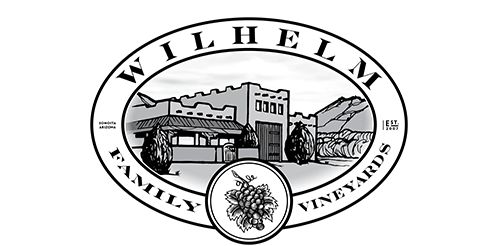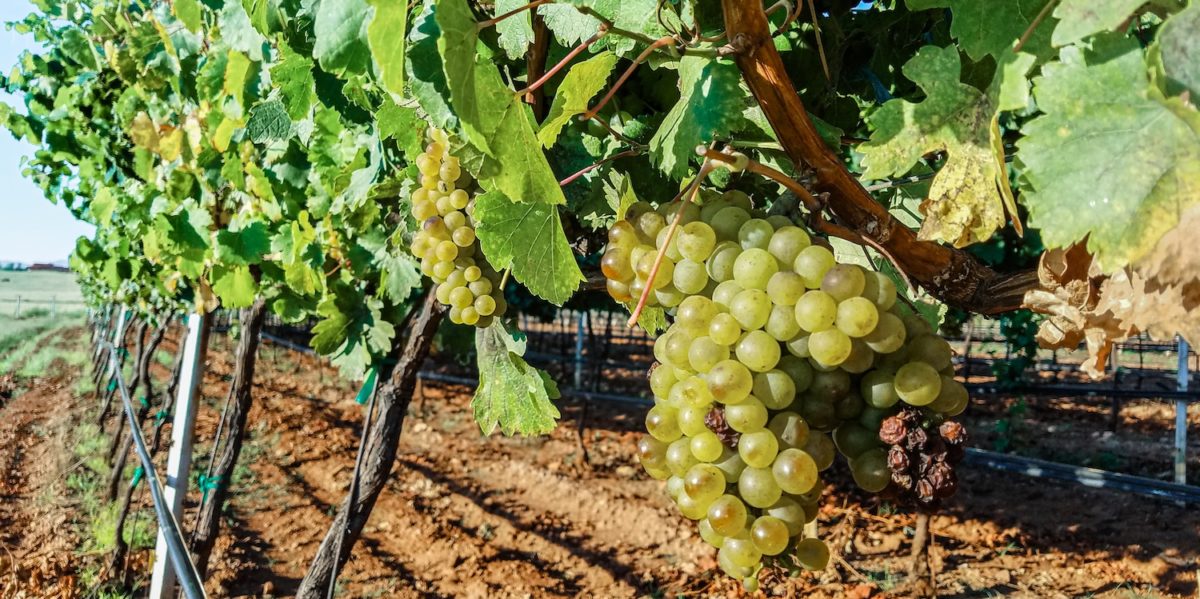When looking at wine regions, it is important to note that no two are exactly the same. There can be numerous differences even between vineyards in close proximity to one another. What makes every vineyard unique is its terroir, a French word meaning “sense of place.” Terroir is a term that identifies the environmental conditions, soil, land characteristics, and winemaking traditions of a specific geographical area. At Wilhelm Family Vineyards, we specialize in Spanish wines and other varietals that can thrive in Sonoita’s complex terroir.
The Factors of Terroir
When breaking down the elements of terroir, it is important to know how each of them affects the final product.
Temperature
When we discuss temperature as a component of terroir, we are talking about the average temperatures over a long period of time. In warmer regions, grapes ripen more easily, often resulting in lower acidity, higher sugar levels, and darker colors. Bolder and fruitier wines are mostly made in warmer regions and dry, refreshing wines in cooler regions.
Climate
While temperature is a key factor in terroir, the overall climate also needs to be considered. Factors such as rainfall, humidity, wind, frost, hail, and sunlight play a large role in the development of a wine. Sun exposure is necessary for grapes to produce sugar, and rain is vital for vine growth. However, too much of either can be a bad thing. Strong winds can also slow the maturation of a grape, which can greatly affect the outcome of the wine.
Soil Composition
The type of soil that grapes are grown in can have a profound effect on the flavor of a wine, as it is responsible for the nutrients they require to prosper. Different types of soil produce different tasting wines. Generally speaking, sandy soil vineyards tend to produce drier wines, while clay-based soils usually produce bolder wines.
Topography
Topography takes into account slope, altitude, and nearby physical features. Each of these has an impact on terroir. For example, steeper slopes drain well and get stronger sunlight, while higher altitudes have colder nights and can cause the wine to taste more elegant. Lakes and large bodies of water can provide a moderating influence, while mountain ranges can offer protection against wind and other elements.
The Terroir of the Sonoita Region
Sonoita is the oldest commercial wine region in Arizona. The Sonoita region has a unique terra rosa soil which is a loamy surface with red clay in the middle and limestone on the bottom. The region has low hills at the foothills of the mountains, filled with alluvial gravels and a good aquifer. Due to the conditions, you will often find wines with higher acidity. The terroir here is quite similar to regions of Spain. The climate in Sonoita is hot, dry, and windy, with seasonal monsoons.
Our Sonoita Vineyard
At Wilhelm Family Vineyards, we have many different flavor profiles due to Sonoita’s unique terroir. What makes a grape interesting is the story that it tells, and the wines made from Sonoita have elements that taste, smell, and feel like Arizona.

